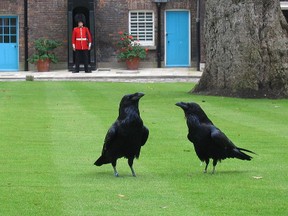 There are currently seven ravens in the Tower of London. Tradition says that there should be six, so one is viewed as the 'spare'.
There are currently seven ravens in the Tower of London. Tradition says that there should be six, so one is viewed as the 'spare'.
The fact that they've become a tourist attraction in their own right meshes well with the apparent pandering to legends. Rationally minded Beefeaters - military men and women all - can brush away any accusation of superstitious thinking, by stating that visitors expect ravens.
But don't be fooled. It's all about the legend.
One Beefeater - the nickname given to the Tower of London guards - is employed to look after the ravens there. The current Tower Ravenmaster is Chris Skaife, who even Tweets regular messages about the birds in his care.
The Tower of London ravens are kept extremely well. They each enjoy hearty meals - each one getting 500g of meat every day, alongside bird biscuits soaked in blood and regular chopped apples - as well as the best veterinarian care in Britain.
At night, they live in cages, but only because foxes crawl through the sewers and have been known to attack them. First thing in the morning, Skaife does his rounds, letting them out of their aviaries alongside the White Tower and the Wakefield Tower. Then the ravens fly free all day.
To a given value of 'free' that is. All of the ravens in the Tower of London have one wing clipped. This allows them to take to the air, but not very far. Often it's only up to land on a low perch. Some struggle to make it as high as the turrets atop this ancient London landmark.
But why all that effort in care and captivity? That's because of the old saying, 'if the ravens leave the Tower, the kingdom will fall'; yet the warning may not be as venerably ancient as is often assumed. Then again, it might.


 There are currently seven ravens in the Tower of London. Tradition says that there should be six, so one is viewed as the 'spare'.
There are currently seven ravens in the Tower of London. Tradition says that there should be six, so one is viewed as the 'spare'.









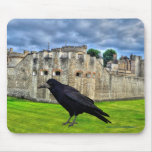
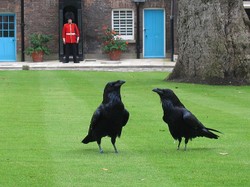

 St Tydecho's Churches in West Waleson 09/03/2014
St Tydecho's Churches in West Waleson 09/03/2014
 Goodies for an Outlander Premiere Partyon 03/06/2015
Goodies for an Outlander Premiere Partyon 03/06/2015
 Holocaust Memorial Day Interview with Rainer Höss, Grandson of Rudolf Architect of Auschwitzon 01/24/2015
Holocaust Memorial Day Interview with Rainer Höss, Grandson of Rudolf Architect of Auschwitzon 01/24/2015
 Romantic Valentine Gifts for an Outlander Fanon 01/16/2015
Romantic Valentine Gifts for an Outlander Fanon 01/16/2015

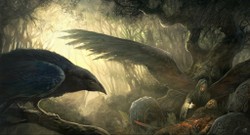
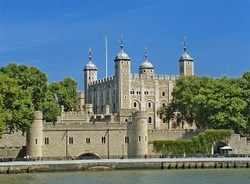
Comments
As ethnically one of those Celts, I preen and thank you muchly. :D Though I didn't personally have much to do with this one.
I always try to go back to source as much as possible. It's amazing how much Chinese whispers kick in, even in historical study!
This is fascinating. I especially enjoyed Boria Sax's being a stickler about checking the source documents -- careers have been made from doggedly tracing backward to originals.
Also intriguing is the underlying potentiality of a transplanted Celtic God being the reality behind the legend. Brilliant. Those Celts: they're powerful, and they're timeless.
LOL I've never heard that before, but even the synopsis made me laugh aloud. I'll certainly be giving it a listen. Thanks!
This brings to mind an episode of the Goon Show in the mid-1950s. Neddie Seagoon steals the 60-foot McCaber of the MacReekie clan who then invade England to get it back. The Scots besiege the Tower of London and Minnie Bannister cooks up 24 ravens in a pie with the result that the Tower falls.
Fortunately perhaps, they don't write stuff like The MacReekie Rising of '74 any more.
http://www.myoldradio.com/old-radio-e...
I should have mentioned it at the time. >.> And yes! I do recall you trying to get pictures! The Beefeaters were trying to chuck us out at the time. LOL
I do recall the ravens, I really liked them! I kept trying to get good pictures of them :)
I did not know they were the Earthy for of the God Bran! Would've changed the whole perspective :O
:D Do you recall the ravens when you were there? And did you realize that you were looking upon the Earthly form of the God Bran?
what's the question re Chris Skaife's accent?
Haha the twitter account! That would be a fun job I think, caring for the ravens. (I have a question about the Raven Master, and his accent. :|)
It's fun reading all these articles you've been writing about the places I got to see.